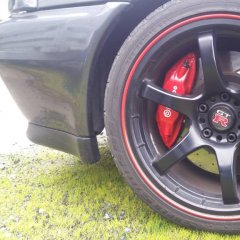Rb26 Oil Pump Choices
Announcements
-
Similar Content
-
Latest Posts
-
By MidnightR32 · Posted
Unless my sensor just died, was only a couple months old, I strongly believe it didn't. How can I test it? I never mentioned it being 20:1+? -
Well, you wouldn't use 2nd hand bearings out of another engine anyway....so just buying the proper bearings is obviously what you're going to do. The crankshaft would be common. The conrods might be common. There is essentially nothing else you would be able to use.
-
Legitimately thought it was a stagea as all i could see at first was the headlights.
-
By Robzilla32 · Posted
https://youtu.be/un8EW82GwKc?si=S9NBHsvl26QEJTF4
-






Recommended Posts
Create an account or sign in to comment
You need to be a member in order to leave a comment
Create an account
Sign up for a new account in our community. It's easy!
Register a new accountSign in
Already have an account? Sign in here.
Sign In Now